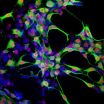(Press-News.org) CHICAGO (June 15, 2011) – A study of Canadian home-care patients suggests doctors may be overprescribing antibiotics for patients receiving ongoing medical care at home. The study, published in the June issue of Infection Control and Hospital Epidemiology, the journal of the Society for Healthcare Epidemiology of America, suggests that more should be done to monitor antibiotic use in home-care patients to avoid misuse that could decrease the efficacy of the drugs over time.
According to the study, led by researchers from McMaster University in Ontario, antibiotic prescriptions for home-care patients are quite common, with more than 6,800 patients receiving the drugs. Additionally, medical data on the patients reveal disturbing prescribing patterns, says Dr. Mark Loeb, one of the study's authors.
For instance, patients under the age of 65 were substantially more likely to receive antibiotics. That finding suggests that "physicians may be overly cautious with younger patients," Loeb said. In contrast, patients with longer life expectancies were less likely to receive antibiotics, despite the fact they would likely benefit more from the drugs compared to patients with poorer life expectancies.
"Taken together, our results reveal tremendous variability in how and why antibiotics are prescribed, and that overuse in the home-care population is likely," Loeb said. "Younger and sicker patients seem to be at added risk for misuse and should be the focus of further study to assess the appropriateness of antibiotic use at home."
Adding concern was the fact that the most common class of antibiotics prescribed in the study was fluoroquinolones, a class of drugs often associated with increased rates of resistance. Overuse of these drugs could weaken their efficacy, threatening their effectiveness against these and other emerging infections.
The researchers used data on more than 125,000 patients receiving home care for more than 60 days from 2006 to 2007. Medical data were collected by nurses through observation, client and family self-reports, and other medical records.
As the threat of drug resistant infections has increased in recent years, much work has been done to identify settings in which antibiotics may be overprescribed. However, before this study very little was known about antibiotics in the home care population, the researchers say.
"Our results illustrate the importance of continuing to monitor antibiotic use in home-care patients, and the need for more effective methods of diagnosis that allow for appropriate antibiotic use," Loeb said. Antibiotic use studies are critical to understanding the basic science of how and why resistance is on the rise.
###
Dominik Mertz, Erin Y. Tjam, Jeff Poss, John P. Hirdes, Bruce Arai, Jennie Johnstone, Micaela Jantzi, and Mark Loeb, "Prevalence and predictors of antibiotic use in community-based elderly in Ontario, Canada." Infection Control and Hospital Epidemiology 32:6.
END
CHICAGO (June 15, 2011) – Use of a glowing gel that shows kids how well they wash their hands by illustrating bacteria they missed while washing and may significantly improve hand hygiene, according to a study published in the July issue of Infection Control and Hospital Epidemiology, the journal of the Society for Healthcare Epidemiology of America. What makes this particular intervention unique is where it was performed: a children's hospital emergency department waiting room.
"Waiting for the doctor is usually a tiresome and unproductive experience, but we were able ...
TORONTO, ON – Researchers at the University of Toronto are the first to indentify a potential cause for a severe sleep disorder that has been closely linked to Parkinson's disease and other neurodegenerative diseases.
"Our research is the first to establish a potential genetic link to human REM sleep behaviour disorder (RBD). That's important because between 60 and 80 per cent of people diagnosed with human RBD develop Parkinson's disease or other neurodegenerative disorders later in life," says Dr. John Peever, lead author of the study that recently appeared in The Journal ...
DURHAM, NC – By shooting a beam of neutrinos through a small slice of the Earth under Japan, physicists say they've caught the particles changing their stripes in new ways. These observations may one day help explain why the universe is made of matter rather than anti-matter.
The T2K experiment has been using the Japan Proton Accelerator Research Complex, or J-PARC, located on the east coast, to shoot a beam of muon neutrinos 185 miles, or 295 kilometers, underground toward the Super-Kamiokande, or Super-K, detector in Kamioka, near Japan's west coast.
The goal of the ...
CHICAGO (June 15, 2011) – Geisinger Health System vaccinated more than 92% of all employees against influenza this season, with a modification of a mandatory program. On average, fewer than half of all healthcare workers receive flu vaccinations.
In an article published in July's Infection Control and Hospital Epidemiology, the journal of the Society for Healthcare Epidemiology of America, Dr. Lisa Esolen demonstrated the effectiveness of Geisinger's influenza vaccination that helped achieve high rates of vaccine compliance for two consecutive years. This past season, ...
GAINESVILLE, Fla. — Like rock stars of the rodent world, the flashiest performers of a Central American mouse species get the most attention from the ladies, a University of Florida study shows.
Neotropical singing mice woo their mates with high-pitched vocal trills, and a bravura performance attracts more interest from females, according to a study published online this week in the journal Animal Behaviour by doctoral candidate Bret Pasch and colleagues in the department of biology at the University of Florida.
The males' prowess could give female mice clues to a ...
DURHAM, NC -- A person scanning baggage or X-rays stands a better chance of seeing everything they're searching for if they aren't feeling anxious, according to a new laboratory experiment.
Duke psychologists put a dozen students through a test in which they searched for particular shapes on a computer display, simulating the sort of visual searching performed by airport security teams and radiologists.
Stephen Mitroff, an assistant professor of psychology and neuroscience who led the experiment, says this area of cognitive psychology is important for improving homeland ...
Have you ever thought you could lose weight and star on The Biggest Loser if you weren't so darned hungry all the time?
Unfortunately, the diets we turn to for help don't do the job. How often have you heard that weight loss is as simple as taking in fewer calories than you burn and--voila!--the pounds will come off?
It's actually a bit more complicated than that. Doctors used to think that a calorie was a calorie. It didn't matter if your diet plan called for eating 1,200 calories in Twinkies all day. If you cut out enough calories, you could lose weight. Now, they're ...
Using sophisticated methods of dating rocks, a team including University of Southampton researchers based at the National Oceanography Centre, Southampton, have pinned down the timing of the start of an episode of an ancient global warming known as the Paleocene-Eocene thermal maximum (PETM), with implications for the triggering mechanism.
The early part of the Cenozoic era, which started around 65.5 million years ago witnessed a series of transient global warming events called hyperthermals. The most severe of these was the PETM at the Paleocene–Eocene boundary, around ...
INDIANAPOLIS – Researchers have used cutting-edge stem cell technology to correct a genetic defect present in a rare blinding disorder, another step on a promising path that may one day lead to therapies to reverse blindness caused by common retinal diseases such as macular degeneration and retinitis pigmentosa which affect millions of individuals.
In a study appearing in an advance online publication of the journal Stem Cells on June 15, 2011, investigators used recently developed technology to generate induced pluripotent stem (iPS) cells from a human patient with an ...
A new study in the Journal of Consumer Research explains why sad people are more likely to want to hug a teddy bear than seek out a visual experience such as looking at art. Hint: It has to do with our mammalian instincts.
"Human affective systems evolved from mammalian affective systems, and when mammals are young and incapable of thinking, their brain systems have to make these pups able to perform the 'correct' behavior," write authors Dan King (NUS Business School, Singapore) and Chris Janiszewski (University of Florida, Gainesville). One way the brain encourages ...


